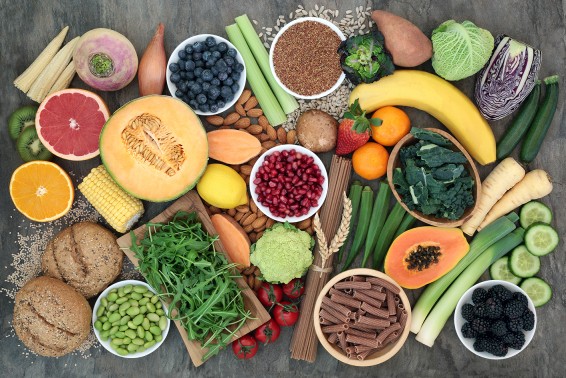22 High Fibre Foods for Better Digestion & Heart Health

Overview
Most people worldwide consume far less fibre than recommended for optimal health. More than 90% of women and 97% of men fail to meet their daily fibre requirements. The recommended daily intake stands at 25 grams for women and 38 grams for men.
A high-fibre diet offers numerous health benefits, including lower cholesterol levels, reduced risk of cardiac disease, and better weight management. Furthermore, adding fibre-rich foods to daily meals helps regulate blood sugar levels and supports digestive health. This comprehensive guide explores 22 readily available foods that can help bridge the fibre gap in your diet, from protein-packed lentils to antioxidant-rich raspberries.
What is Fibre, and What are Its Types?
Dietary fibre represents the parts of plant foods that pass through the digestive system without being broken down. Unlike other nutrients, such as fats and proteins that the body absorbs, fibre remains essentially intact throughout digestion.
Two primary types of fibre exist:
Soluble Fibre:
Soluble fibre dissolves in water and forms a gel-like substance in the stomach. This type slows down digestion and helps manage blood sugar levels. Foods enriched in soluble fibre include oats, peas, beans, apples, and citrus fruits.
Insoluble Fibre:
Insoluble fibre maintains its structure and does not dissolve in water. This type adds bulk to stool and supports regular bowel movements. Whole grains, nuts, and vegetables like cauliflower contain substantial amounts of insoluble fibre.
Moreover, both types of fibre offer unique benefits. Soluble fibre binds with fatty acids and helps lower cholesterol levels. Additionally, it slows down the sugar absorption in the bloodstream. Insoluble fibre, primarily found in the skins of fruits and vegetables, aids digestion by drawing fluid into the gut.
Most plant-based food products contain a mixture of both fibre types, though in varying amounts. The skin of fruits & vegetables typically contains more insoluble fibre, whereas the flesh often provides more soluble fibre. Understanding these differences helps create a balanced, high-fibre diet supporting overall health.
Benefits of High-fibre Food
A high-fibre diet offers remarkable health advantages that extend far beyond basic nutrition. Research shows that people consuming the highest amounts of dietary fibre reduce their risk of cardiovascular disease by up to 28%.
Cardiac Health:
Fibre supports heart health in multiple ways. It reduces total cholesterol and LDL cholesterol levels. This happens because fibre binds with cholesterol in the small intestine, blocking its absorption into the bloodstream.
Blood Sugar Control:
Fibre forms gels in the stomach that slow glucose absorption. Consequently, this helps manage blood sugar levels and decreases the likelihood of type 2 diabetes by up to 30%.
Weight Management:
Certain types of fibre, especially soluble fibre, act as natural appetite suppressants. They form a gel-like substance that slows stomach emptying, creating longer-lasting feelings of fullness.
Gut Health Benefits:
Here are the key digestive benefits of a high-fibre diet:
Increases stool bulk and softens it
Reduces risk of haemorrhoids
Lowers chances of developing diverticulitis
Supports regular bowel movements
Reduces gut inflammation and improves various digestive disorders
Experts recommend getting fibre from whole foods rather than supplements for optimal health benefits.
22 High-fibre Foods to Eat

Exploring nature's fibre-rich treasures reveals an abundance of nutritious options. Here's a detailed look at foods that pack substantial fibre content:
Split Peas
Split peas offer 16 grams of fibre per cup. They rank among the highest fibre-containing foods available.
Chia seeds
Chia seeds lead the pack with 10 grams of fibre per ounce. These tiny powerhouses contain 85-93% insoluble and 7-15% soluble fibre.
Broccoli
Broccoli delivers 5 grams of fibre per cup. This cruciferous vegetable simultaneously provides vitamins C, K, and folate.
Dark Chocolate
Dark chocolate contains 11 grams of fibre per 100 grams. Primarily, it offers essential minerals like iron, magnesium, and zinc.
Brussels Sprouts
Brussels sprouts provide 4 grams of fibre per cup. They support digestive health and contain beneficial compounds called glucosinolates.
Apples
One medium apple packs 4.37 grams of fibre. A portion comes from soluble fibres called pectin, which aids in blood sugar management.
Kidney Beans
Kidney beans contain 12 grams of fibre per cup. Meanwhile, they offer substantial amounts of folate and iron.
Almonds
Almonds deliver 3.5 grams of fibre per ounce. Additionally, they contain healthy fats and vitamin E.
Avocados
One avocado provides 6.7 grams of fibre. It helps improve digestion and supports gut bacteria growth.
Carrots
Carrots offer 3.5 grams of fibre per cup. Their pectin content aids in lowering blood sugar levels.
Popcorn
Air-popped popcorn contains 4.11 grams of fibre per serving. Hence, it serves as one of the world's best fibre sources.
Pears
One medium pear delivers 6 grams of fibre. Undeniably, they rank higher than almost any fruit in terms of dietary fibre content.
Chickpeas
Chickpeas provide 12 grams of fibre per cup. Soon after consumption, they help maintain bowel regularity.
Raspberries
Raspberries pack 8 grams of fibre per cup. Accordingly, they contain less sugar than most fruits.
Beets
Beetroots contain 3.4 grams of fibre per cup. Lastly, they support digestive health through their fibre content.
Quinoa
Cooked quinoa offers 5 grams of fibre per cup. Initially, it may help reduce hunger and promote fullness.
Sweet potatoes
One cup of sweet potatoes offers 6.6 grams of fibre. They contain both soluble and insoluble fibre types.
Lentils
Lentils provide 15.5 grams of fibre per cup. Presently, they stand as one of the most iron-rich legumes.
Strawberries
Strawberries contain 2 grams of fibre per serving. Their fibre serves as a prebiotic, feeding beneficial gut bacteria.
Oats
Oats deliver 5 grams of fibre per cup. Their unique beta-glucan fibre helps lower cholesterol levels.
Artichokes
One medium artichoke contains 10 grams of fibre. They provide inulin, a type of fibre that acts as a prebiotic.
Bananas
One medium banana offers 3 grams of fibre. Their resistant starch content functions similarly to fibre, supporting gut health.
Conclusion
Meeting daily fibre requirements doesn't need to be complicated. The wide variety of fibre-rich foods makes it easy to include them in regular meals. A person can start their day with oats, add berries to snacks, and include legumes in main meals.
These simple changes help bridge the gap between current intake and recommended amounts. People who consume adequate fibre reduce their risk of heart disease, maintain better blood sugar levels, and enjoy improved digestive health.
Above all, the key lies in choosing whole, natural foods over processed alternatives. Fibre-rich foods offer more than just dietary fibre - they pack essential vitamins, minerals, and other nutrients that support overall health.
Therefore, small, consistent changes in food choices can make a significant difference. Adding just a few high-fibre foods from this list to daily meals helps reach the recommended 25-38 grams of fibre per day. This simple approach ensures better health outcomes while making meals more nutritious and satisfying.
FAQs
How can I get 30g of fibre daily?
A practical approach involves spreading fibre intake throughout the day. A sample menu includes- 1 cup of oatmeal with blueberries (5g) for breakfast, brown rice with split peas and broccoli (13g) for lunch, whole wheat toast with avocado (17.5g) for dinner, and a pear (5.5g) as a snack.
Should I choose supplements over fibre-rich foods?
Natural food sources remain the best choice. Primarily, fibre-rich foods provide additional benefits like vitamins, minerals, and plant nutrients. Alternatively, supplements bind with minerals like calcium and iron, reducing their absorption.
What helps with fibre absorption?
Water intake plays a crucial role in fibre effectiveness. Subsequently, certain medications might affect regularity. Here are key tips for better fibre absorption:
Mix high-fibre cereals with regular ones
Keep fruit and vegetable skins intact
Choose whole-grain alternatives
Include beans in various dishes
Opt for fibre-rich snacks
Can fibre prevent illnesses?
Ordinarily, a high-fibre diet reduces the risk of several conditions, including cardiovascular disease, high blood pressure, and type 2 diabetes. Research suggests it might also lower breast cancer risk, particularly in women who consume high-fibre foods from adolescence through young adulthood.






